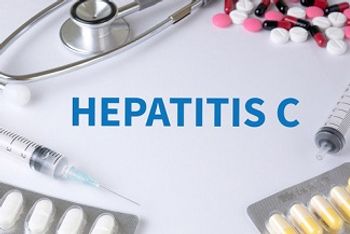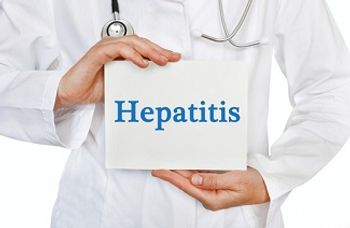
HCV / Hepatitis
Latest News

Latest Videos

More News

Study shows this could reduce hepatitis C and injection-related infections, with each dollar invested saving $2 in treatment costs.

A study found deploying peers with lived experience in illicit drug use increased the rate of people diagnosed, treated, and cured of the disease.

In a study evaluating bulevirtide as monotherapy, investigators found the antiviral to be safe and tolerable following nearly a year of treatment.

The development of CRMA-1001, a potential functional cure for chronic hepatitis B and D, is set to enter clinical trials in 2025.

Focused prevention policies and support systems have shown to reduce HCV prevalence in at-risk groups. Addressing factors like IDU, lack of income, and alcohol misuse through targeted education and interventions is essential to mitigate HCV infection rates locally and globally.

Study explores the receptiveness to long-acting antiviral solutions in low- and middle-income countries.

The combination therapy’s developer, Atea Pharmaceuticals, is looking to initiate a phase 3 study in early 2025.

This study explores HLA-E as a target to activate the immune system in HBV infection, identifying a stable peptide, Env371-379 L6I, that effectively triggers T-cell responses.

Combining over 1,000 human antibodies, GIGA-2339 aims to achieve viral clearance and activate the immune system, offering a potential solution where current therapies fall short of providing a cure.

Patients with autoimmune hepatitis who are deficient in vitamin D had worse outcomes than patients with normal vitamin D levels.

Investigators highlighted the long-term cost-effectiveness of routine HCV screening as well as linkage-to-care for high-risk patients in emergency departments.

Recent studies show oral vancomycin reduces CDI by 64% in stem cell transplant patients, Biktarvy is effective for HIV/HBV co-infection, climate change drives rising dengue cases, and a 7-day antibiotic regimen is as effective as 14 days for bloodstream infections.

The country’s program yielded screening and treatment in almost two thirds of the identified at-risk population.

The ALLIANCE Phase III study demonstrated that Biktarvy, a TAF-based regimen, achieved sustained virologic suppression in adults with HIV/HBV co-infection.

Atea Pharmaceuticals has been reporting data on its combination of bemnifosbuvir and ruzasvir as a potential treatment for the virus.

Arbutus CEO Michael McElhaugh discussed trial results showing that a combination of imdusiran, an RNAi therapeutic, and pegylated interferon alfa-2α can achieve a functional cure in chronic hepatitis B patients.

The monoclonal antibody’s manufacturer, Bluejay Therapeutics, also reports in its phase 2 clinical trial there was up to a78% combined virologic response and ALT normalization as monotherapy.

Participants who used fentanyl were 1.64 times more likely to experience HCV seroconversion compared to those who did not.

Results suggest a shorter treatment duration could reduce costs and improve access in low- and middle-income countries.

Survey data show pharmacists are integral to HCV screening and treatment across healthcare settings, highlighting their contributions to HCV elimination efforts.

This week, a need for better access to diagnostic technologies for Long COVID, Iterium Therapeutics' discussed their FDA-approved Orlynvah for uncomplicated UTIs, the recent rise in human cases of avian influenza, and more.

In the second part of their interview, Debika Bhattacharya, MD MSc, and Su H. Wang, MD, MPH, FACP, continue the conversation around the difficulties of getting people into care, and what the new hepatitis B guidelines hope to improve in this area.

HCV infection was associated with elevated brachial-ankle pulse wave velocity levels in patients with ESRD receiving hemodialysis.

Debika Bhattacharya, MD MSc, and Su H. Wang, MD, MPH, FACP, provide important insights on the latest in hepatitis B (HBV) clinical care.

Catherine Chappell, MD, MSc, presents what we know so far, highlighting the safety and effectiveness of direct-acting antivirals, the importance of shared decision-making, and the need for patient-provider discussions to ensure informed choices about care.



































































































































































































































































































